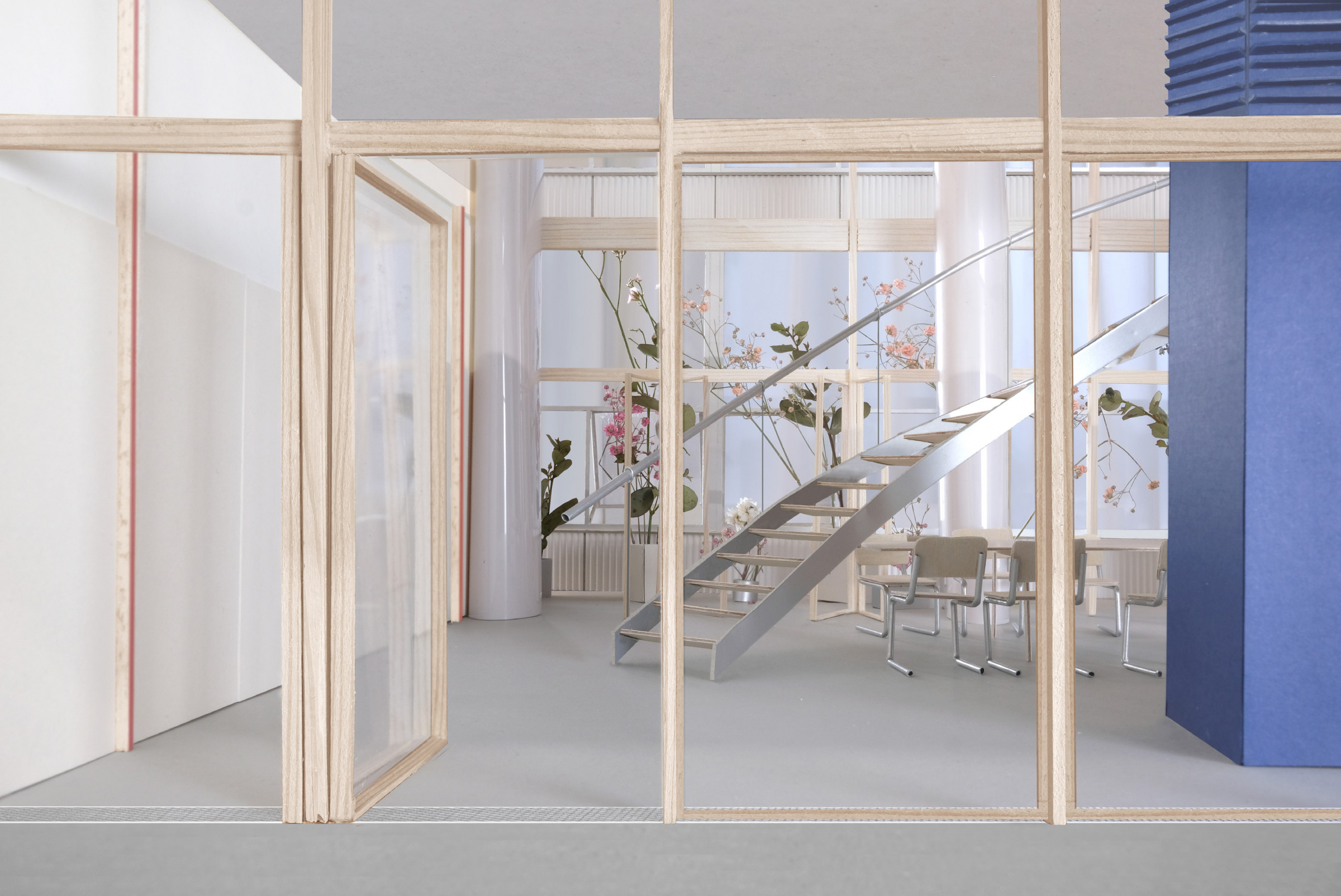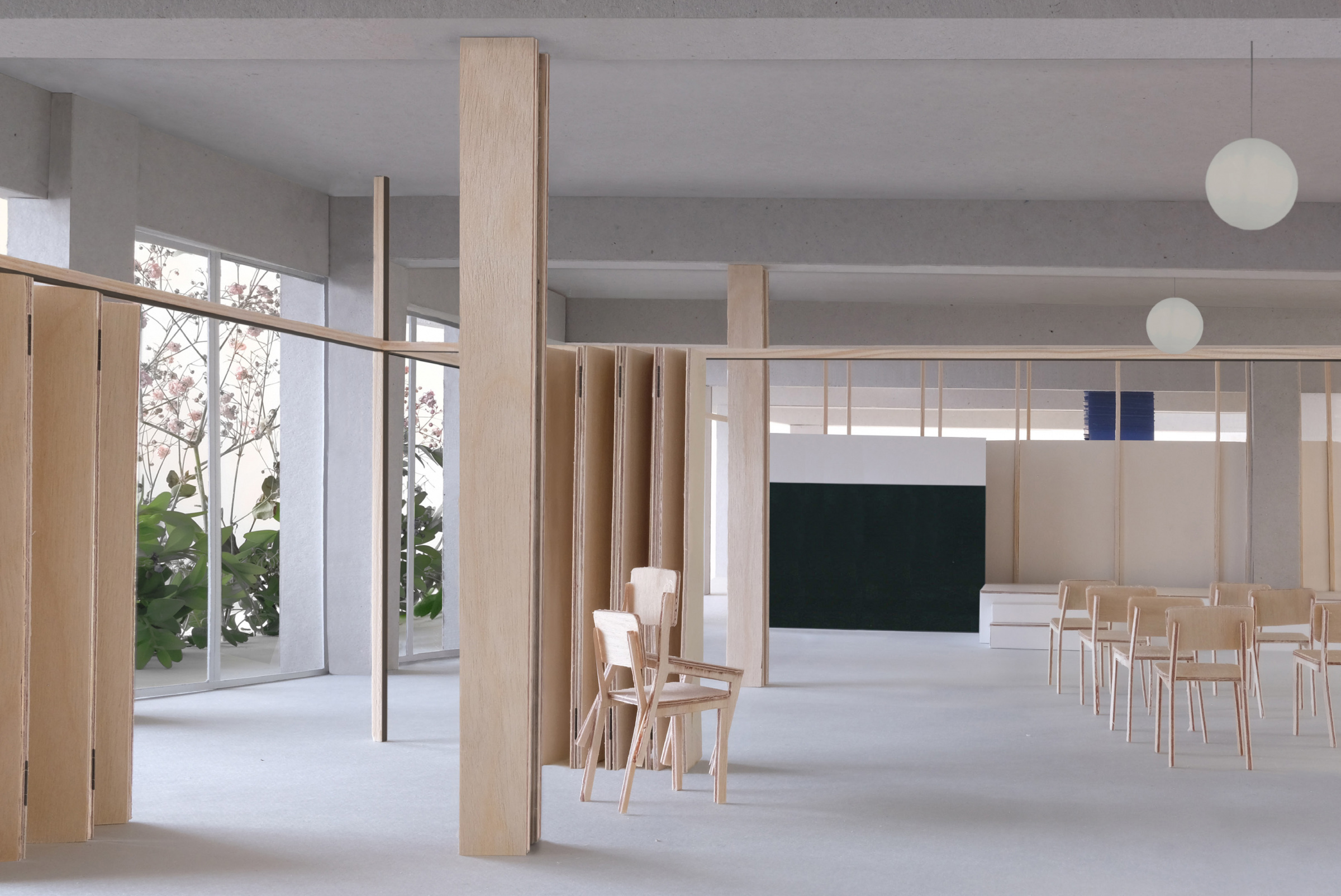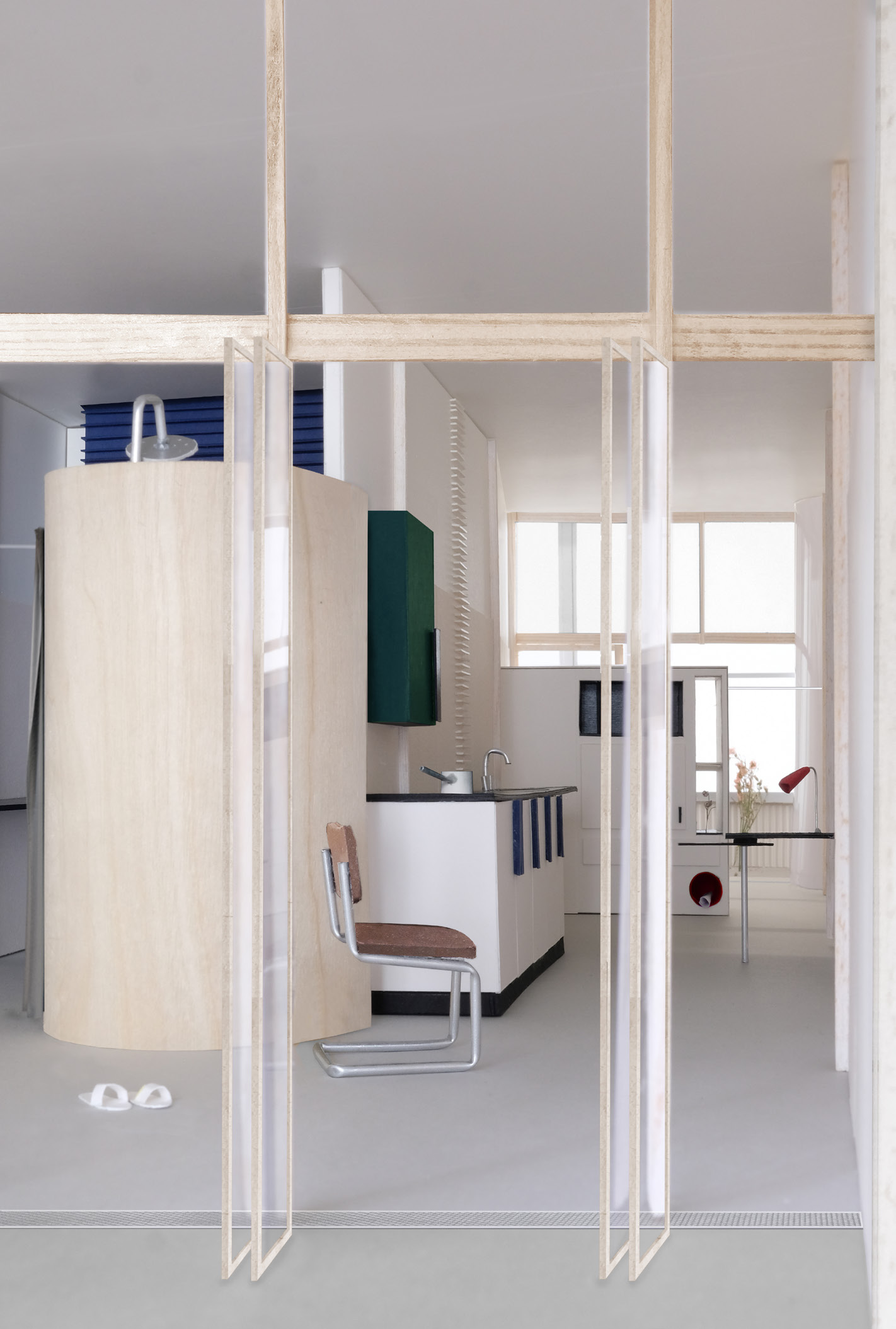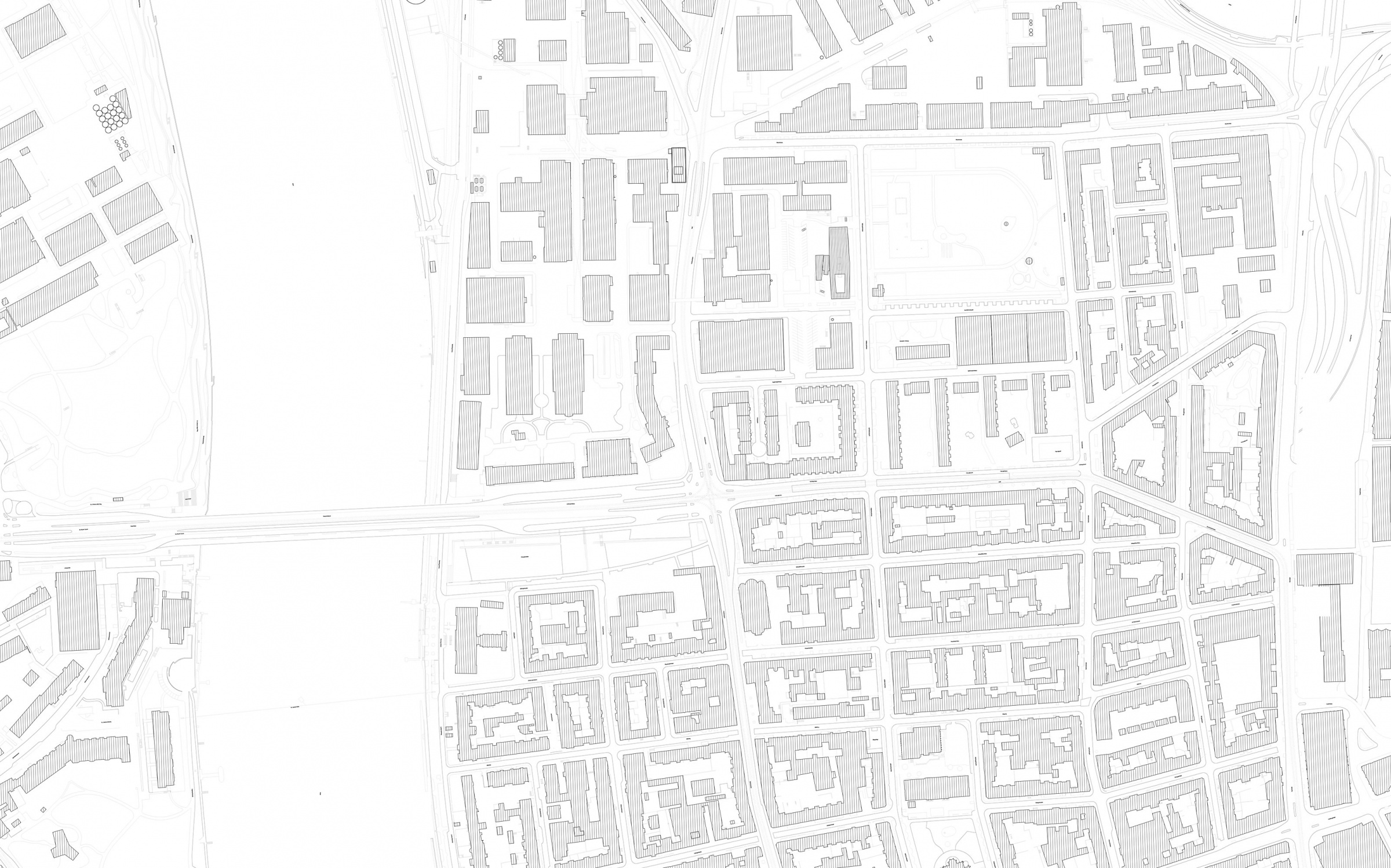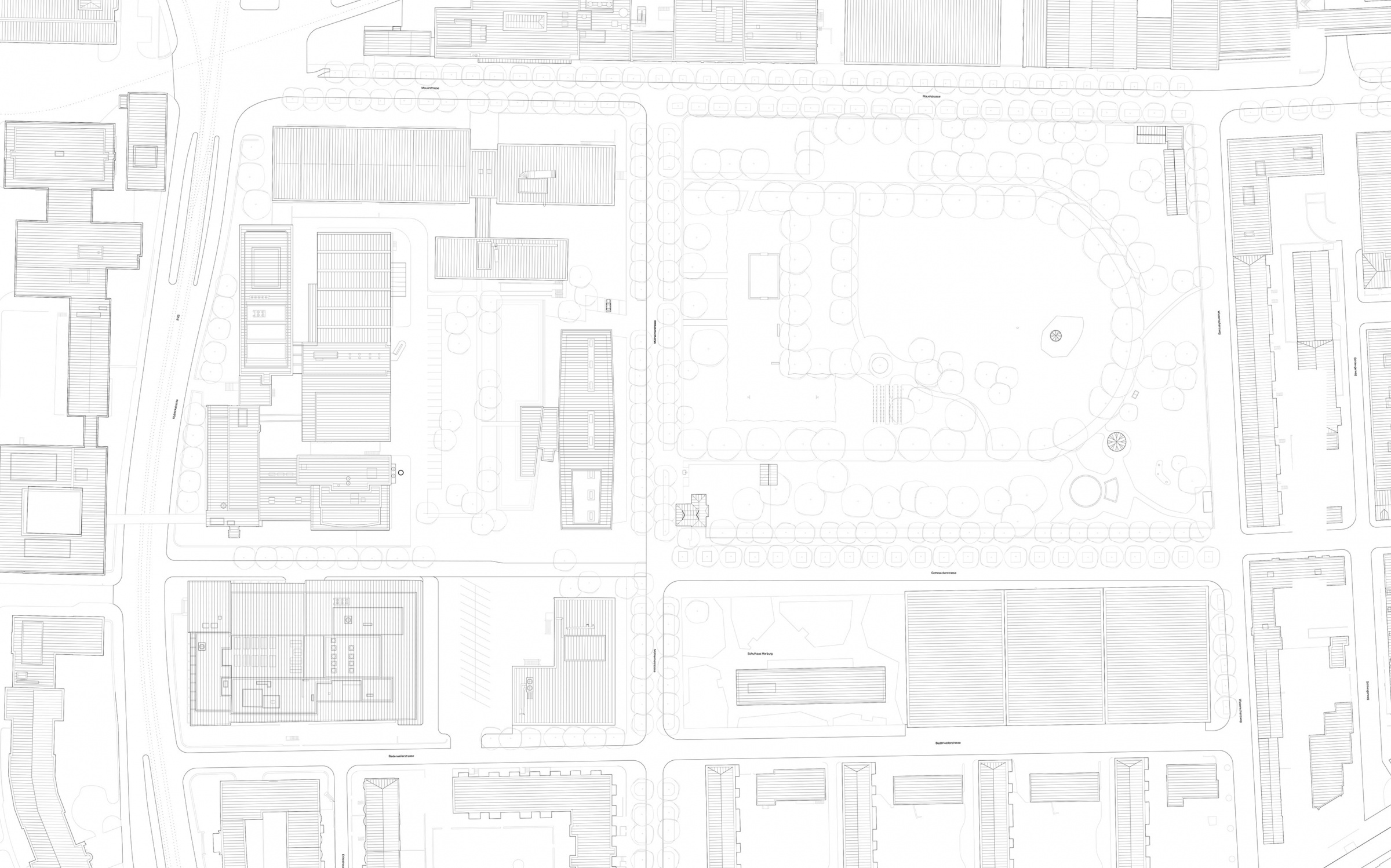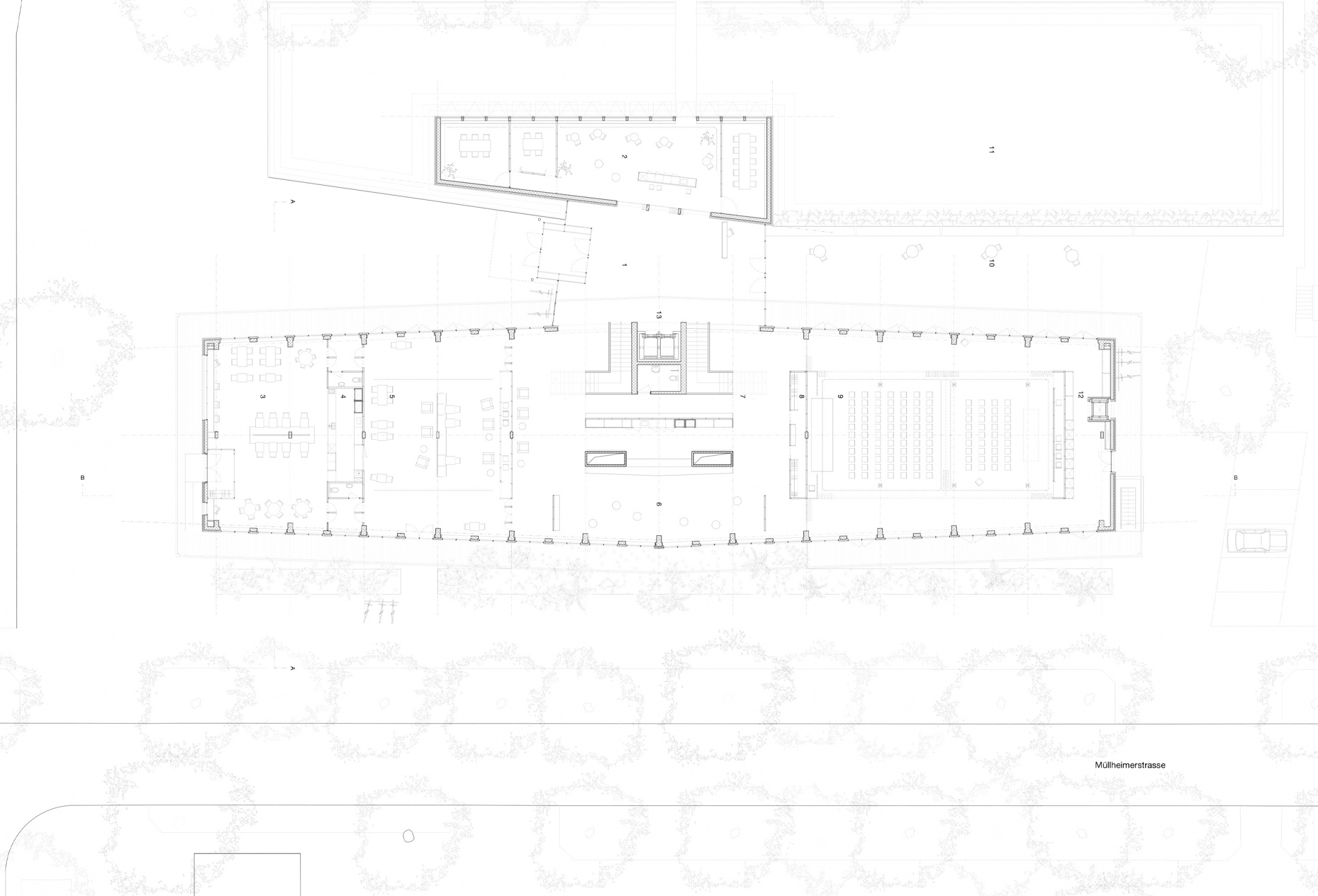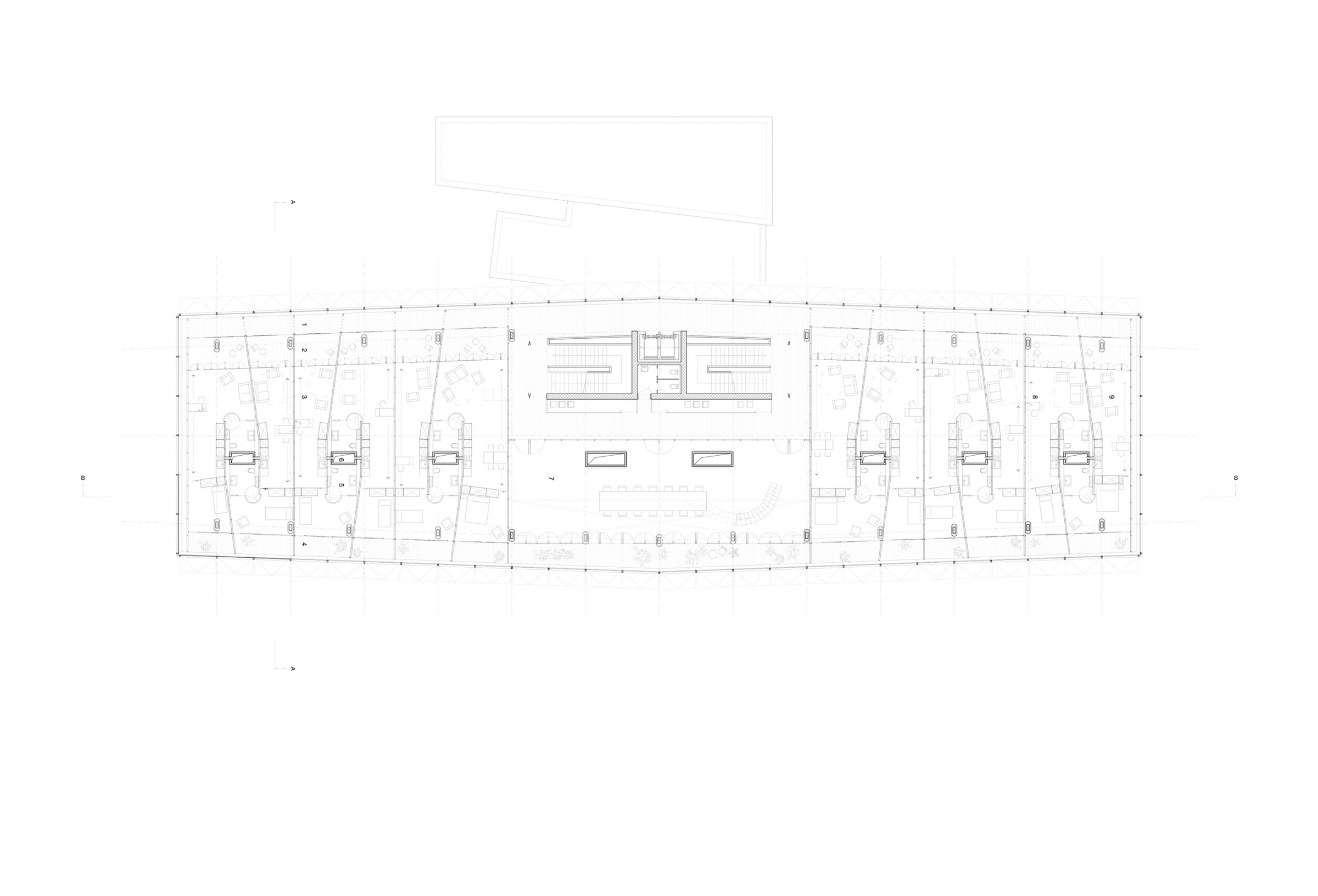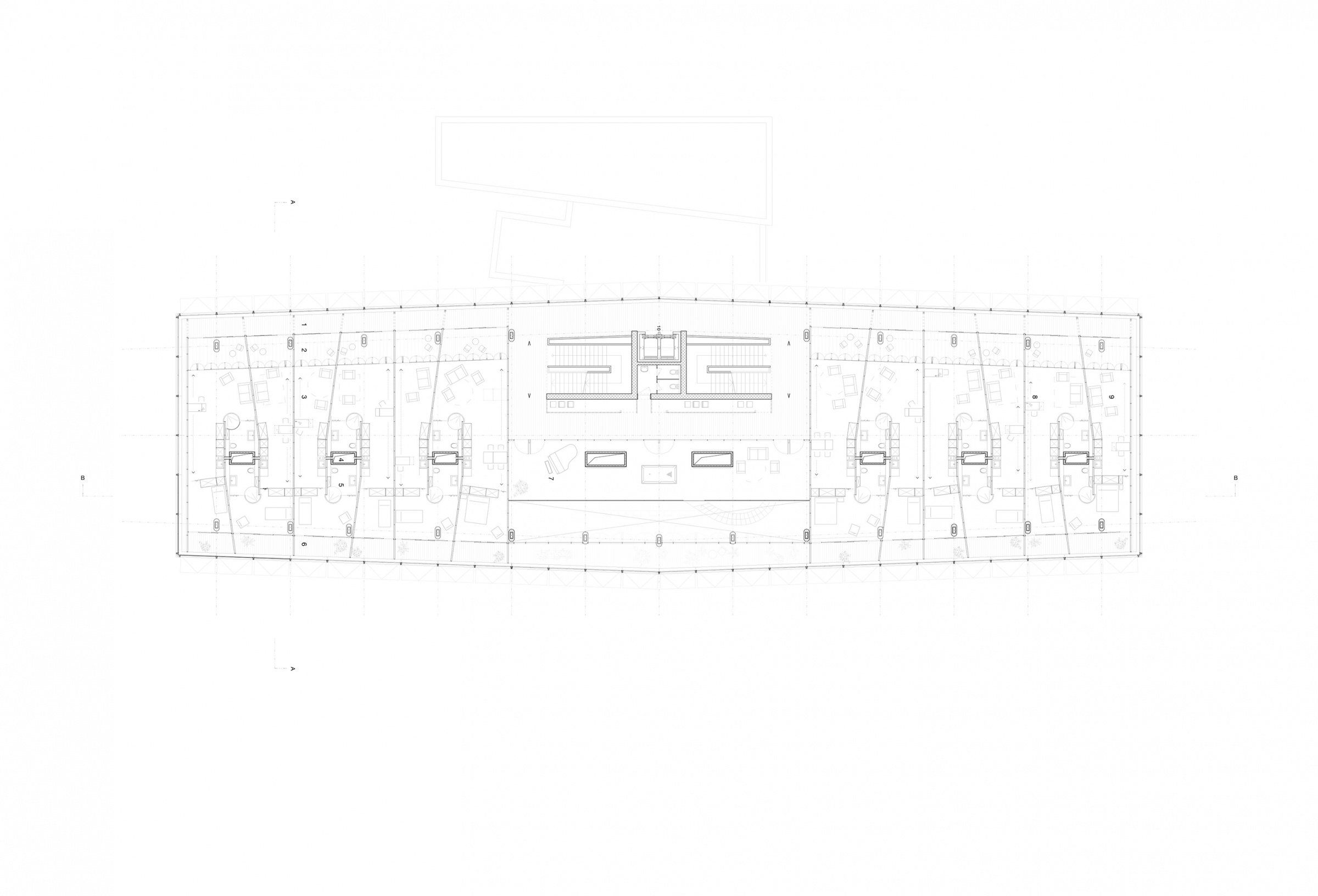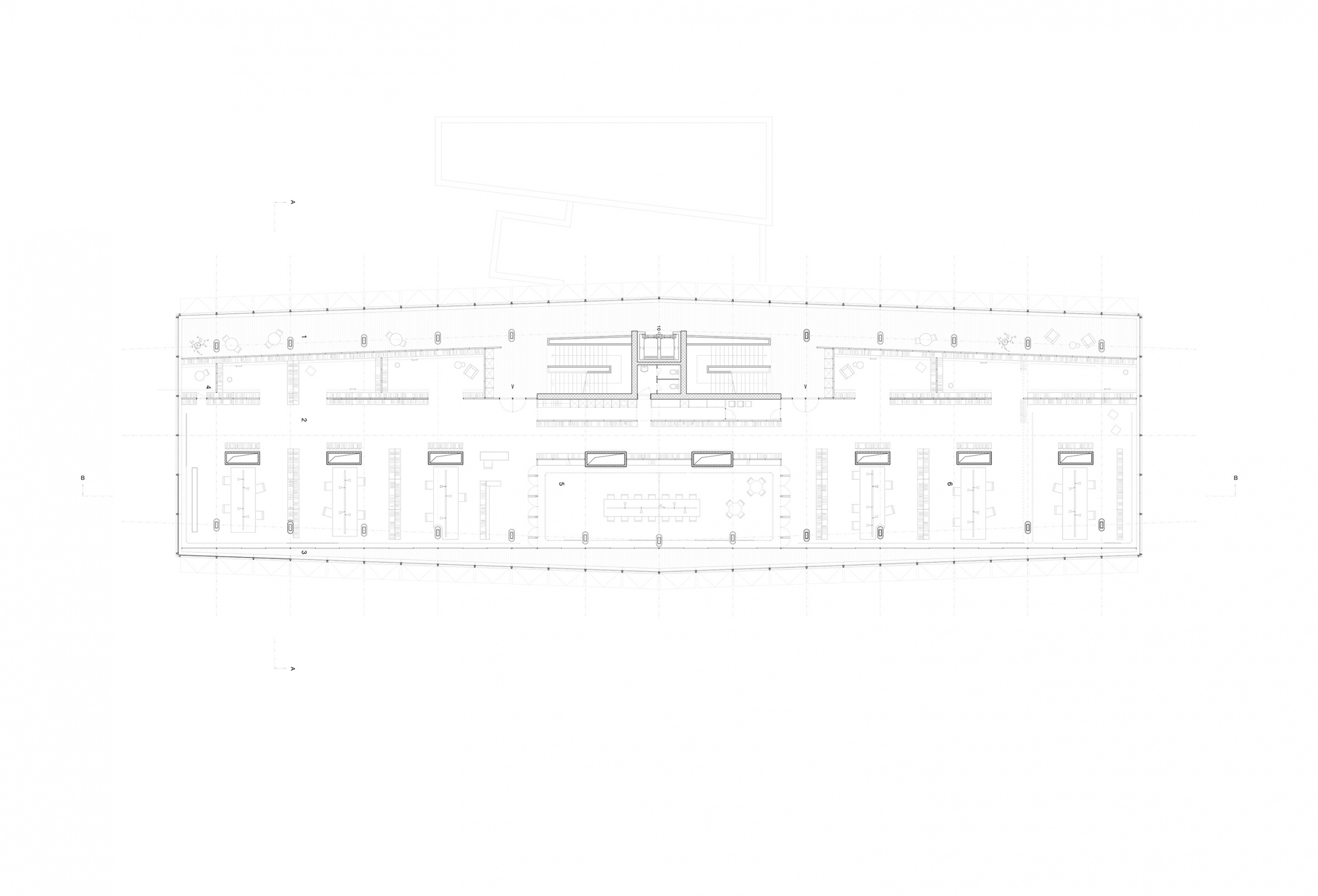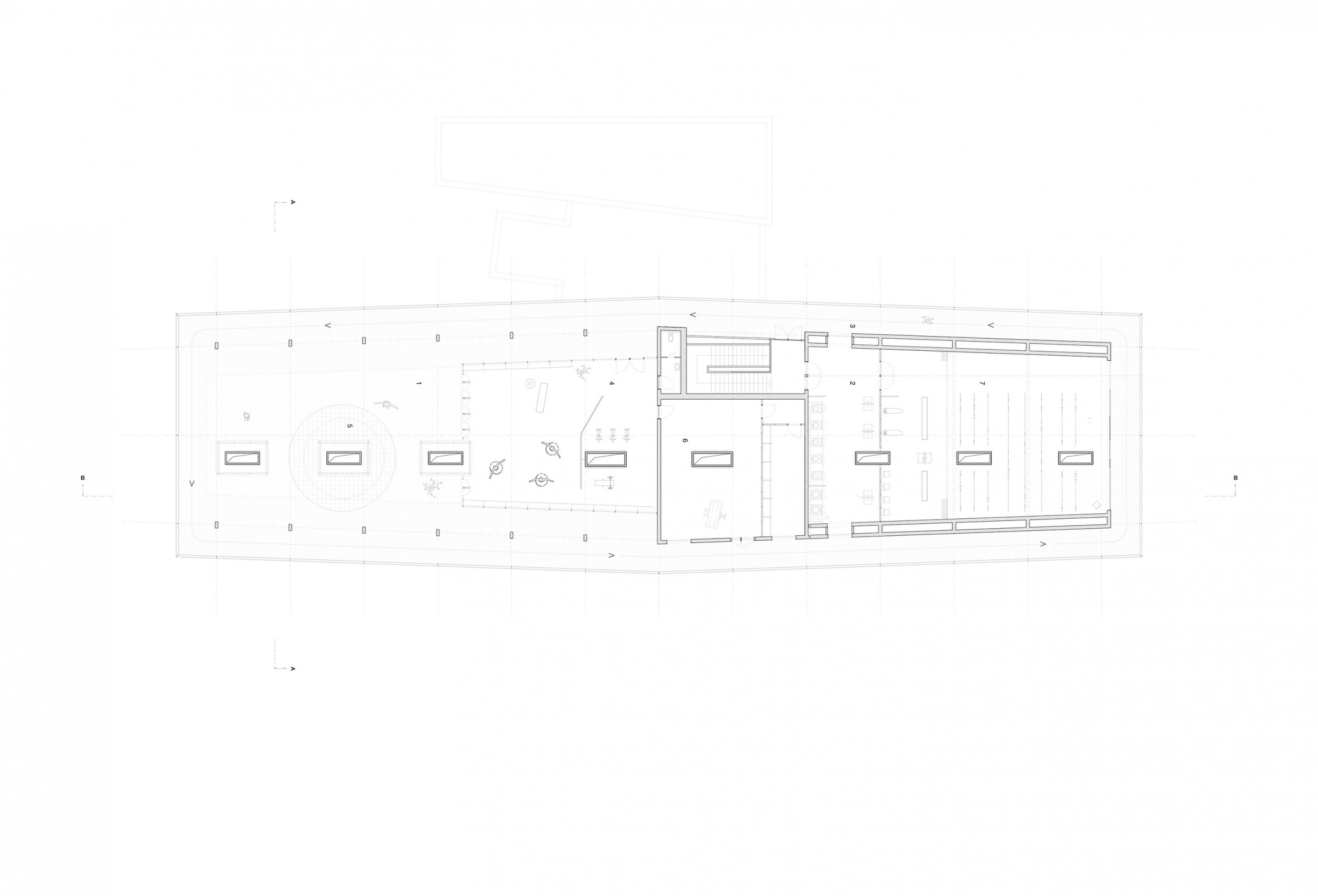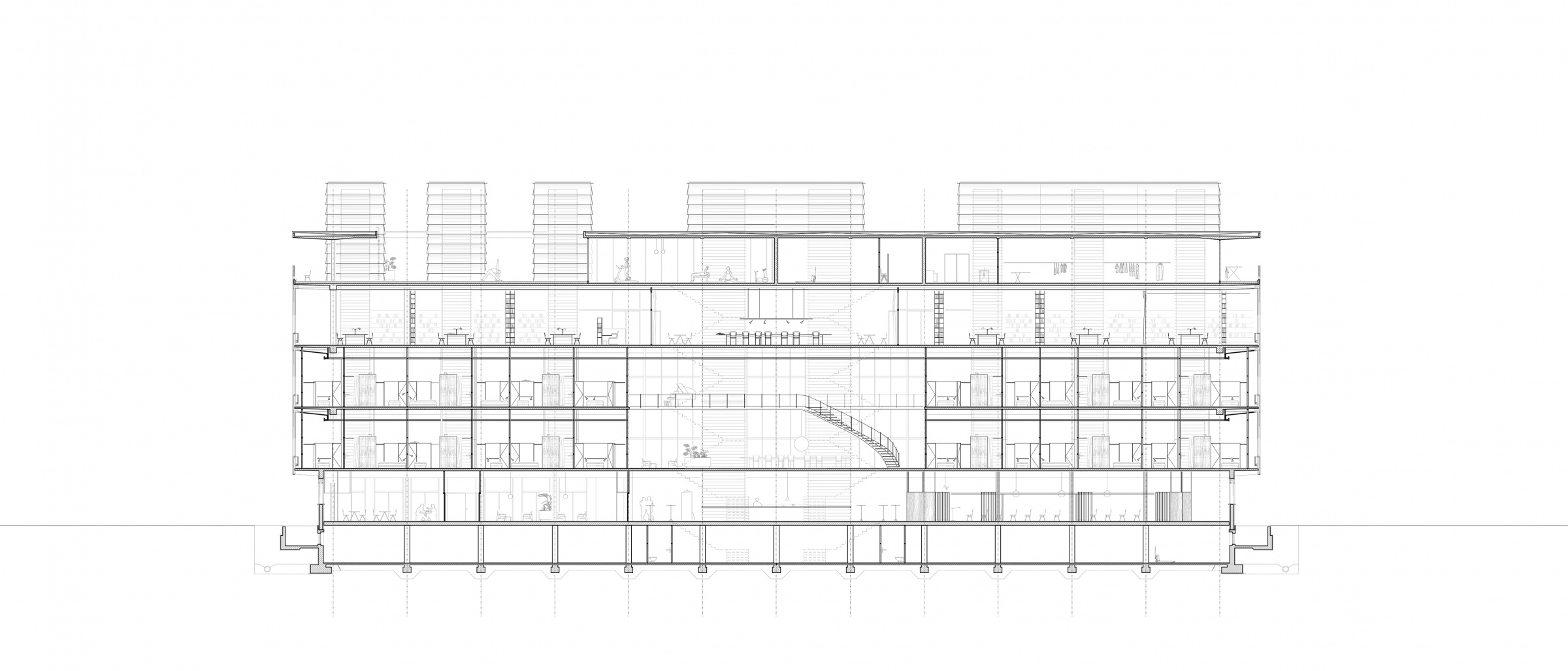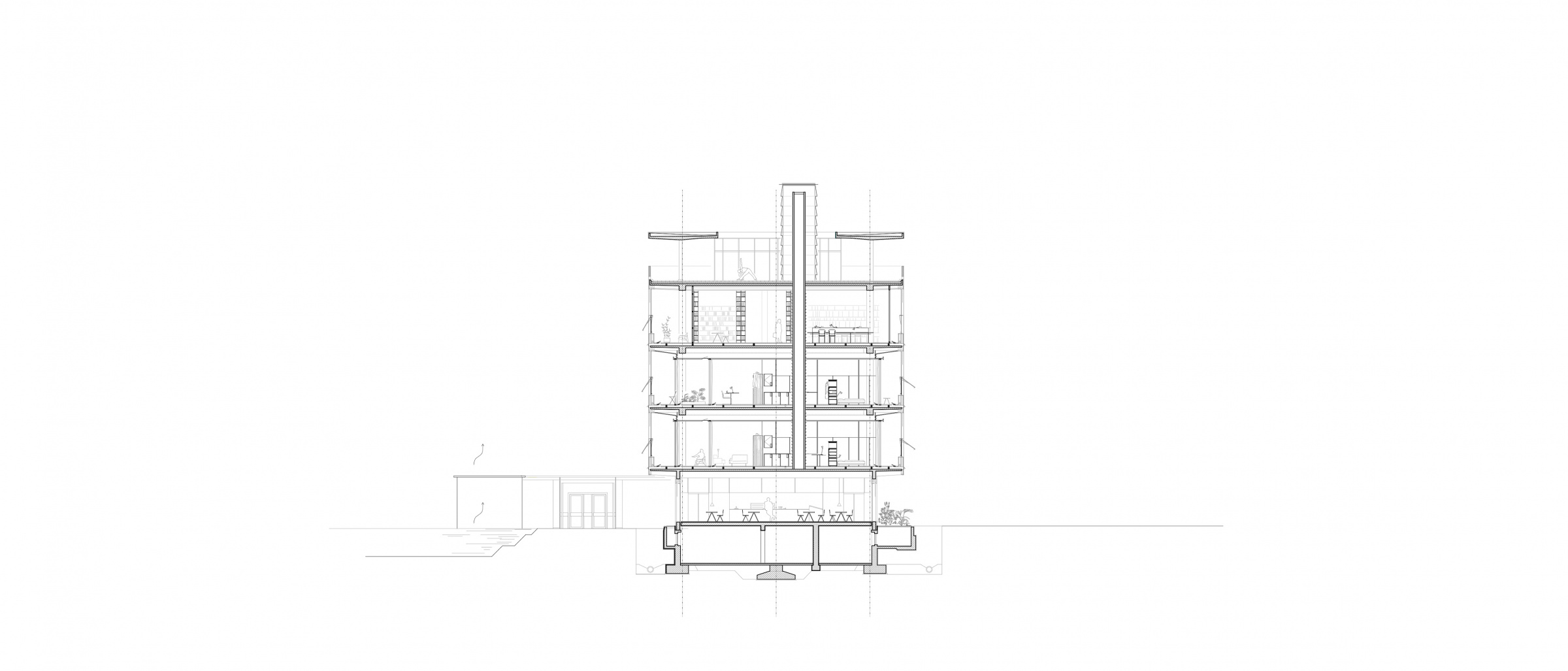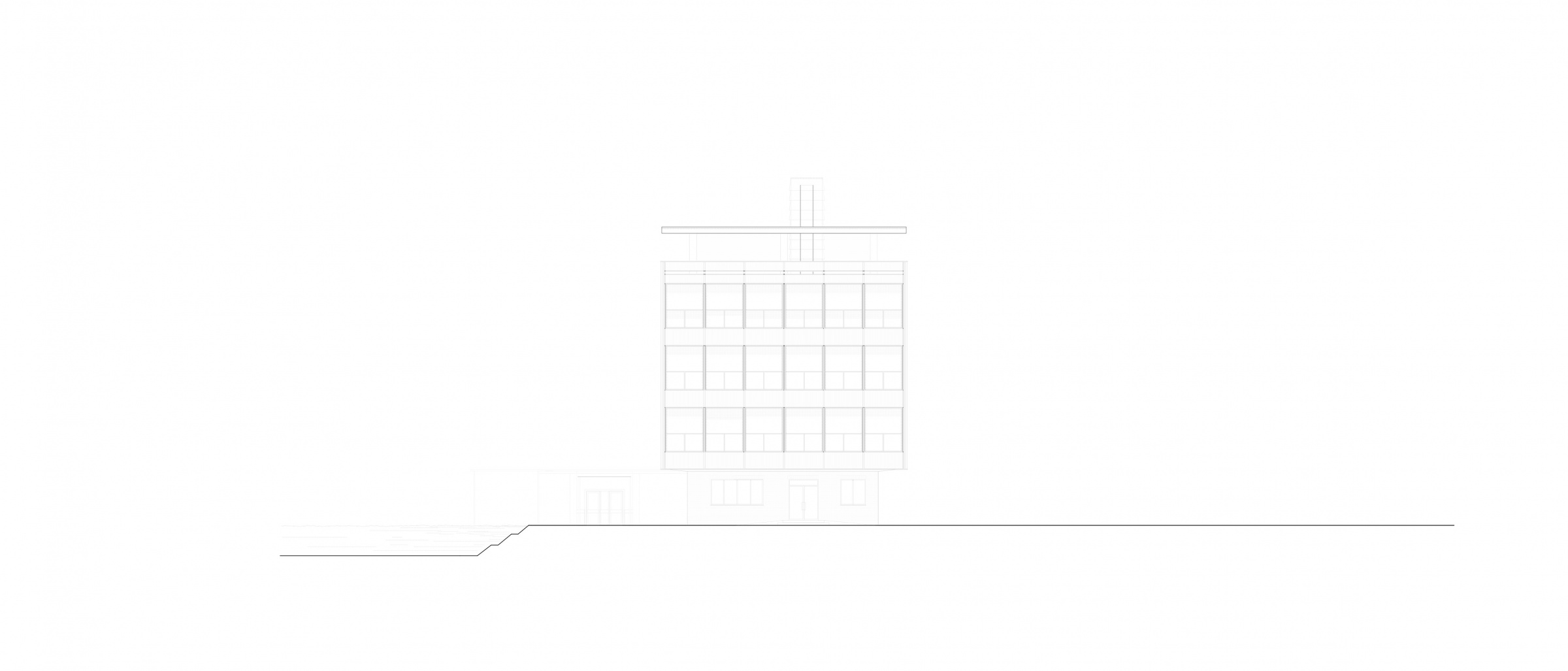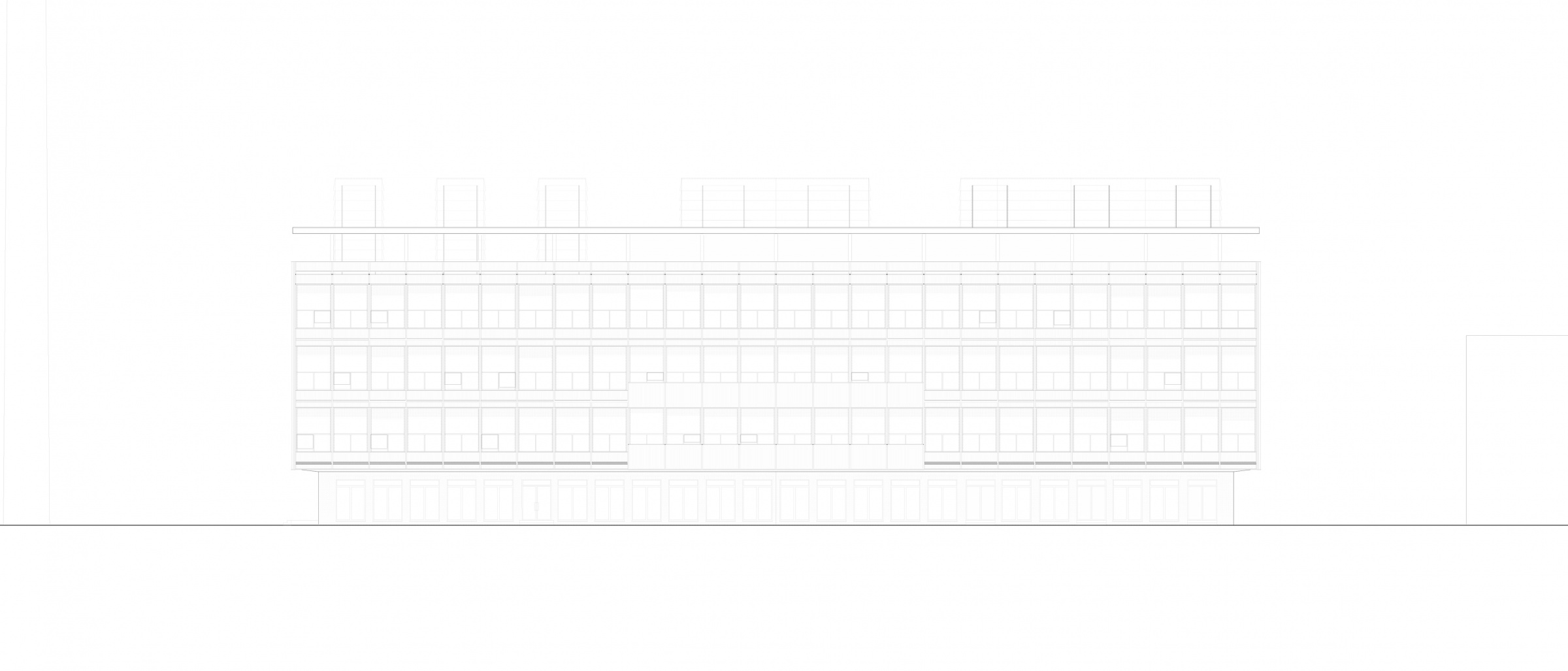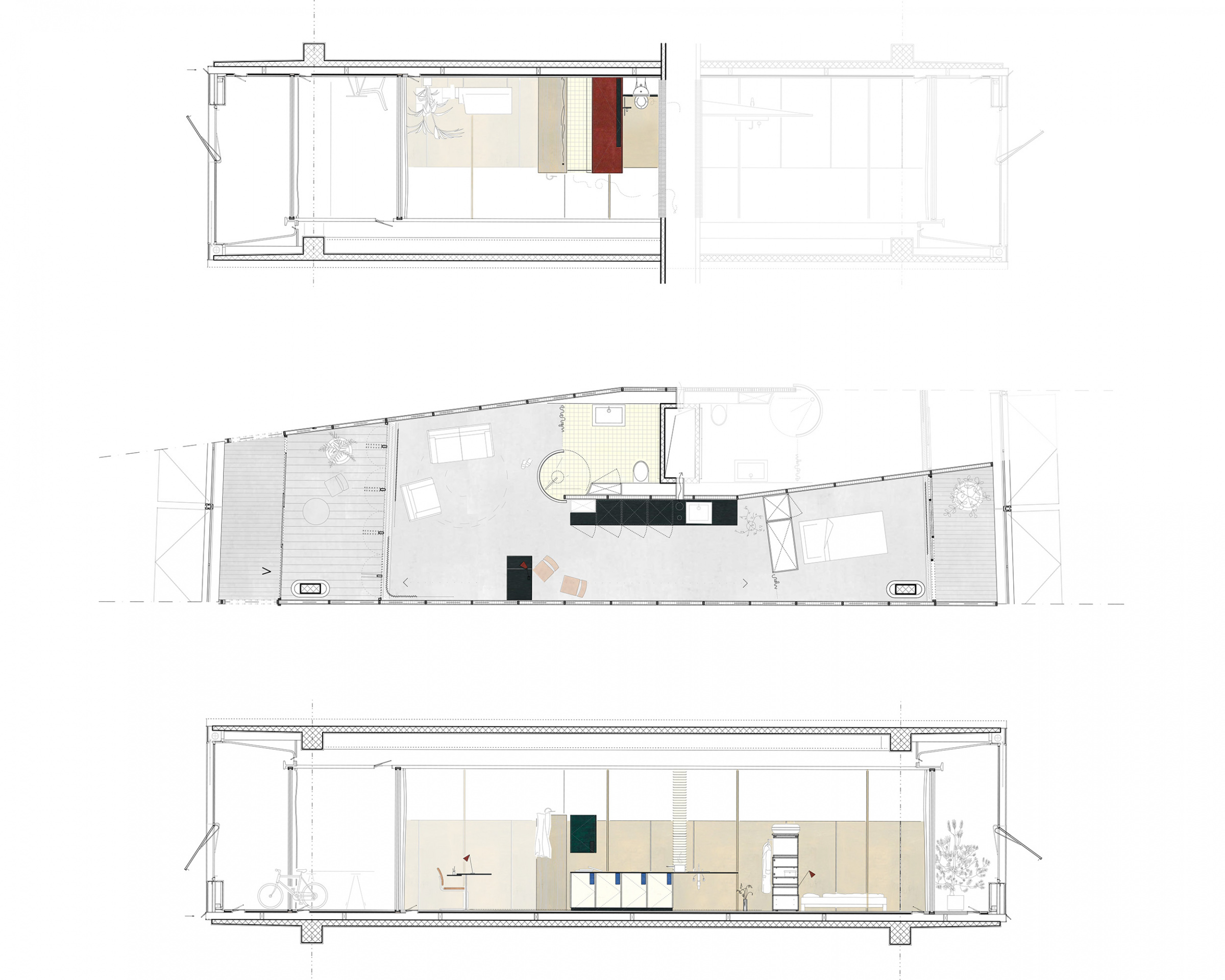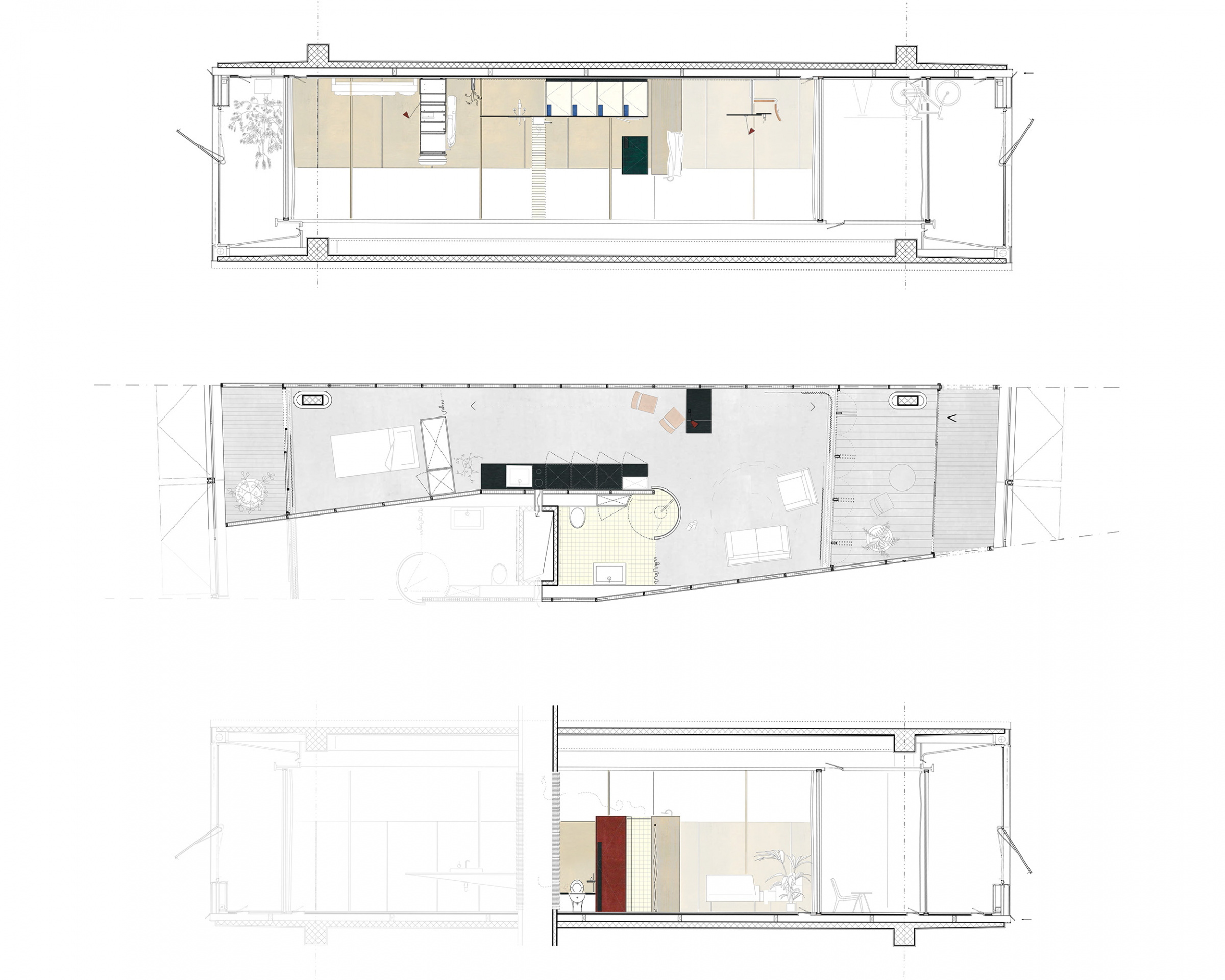The environment of a building is under continuous social, economic and technological change. What role does the construction of a building play in the process of these environmental changes? Do new usage requirements inevitably lead to a complete replacement of the building, or can they be converted to make them suitable for the new environment? Can CIBA’s existing welfare building from 1957 fin a changed form even play an innovative, identity-creating role in a newly developed quarter?
Observing the existing has pushed me to choose the new paradigm of a personal comfort-adaptive architecture thanks to which I have created a new art of participatory inhabitation. My project highlights the importance of adaptability and flexibility in design. The doctorands are free to shift, adjust and divide the spaces based on their personal needs through flexible partitions (i.e. layers and walls). In addition, the flexibility of the layers and the controlled / uncontrolled spaces allow the doctorands to regulate the thermal conditions within the entire building.
To a large extent, CIBA’s welfare building built in 1957 is left close to its original state, with small-scale interventions and adaptations. Innovation and research are part of CIBA’s welfare house’s identity – they have always been and will remain. The doctorand’s house aims to be a place where innovation and research can flourish, a doctorand’s house that is perfectly adaptable to the needs of the individual as well as of the community.
